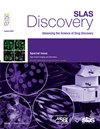Rapid luminescence-based screening method for SARS- CoV-2 inhibitors discovery
IF 2.7
4区 生物学
Q2 BIOCHEMICAL RESEARCH METHODS
引用次数: 0
Abstract
The COVID-19 pandemic has emphasized the necessity for rapid and adaptable drug screening platforms against live pathogenic viruses that require high levels of biosafety containment. Conventional antiviral testing is time-consuming and labor-intensive. Here, we outline the design and validation of a semi-automated drug-screening platform for SARS-CoV-2 that utilizes multiple liquid handlers, a stable A549 cell line expressing ACE2 and TMPRSS2 receptors, and a recombinant SARS-CoV-2 strain harboring the nano-luciferase gene. This platform allows for accelerated low-, mid-, and high-throughput screenings by bypassing the virus inactivation and the staining steps compared to assays utilizing fluorescent reporter viruses or immunofluorescence. First, we demonstrated that the luminescence signal obtained at 24 h post-infection is robust and can be used as a surrogate for fluorescent reporter viruses and immunofluorescence assays that require 48 h incubation post infection. We confirmed the susceptibility of the reporter virus to a panel of reference drugs and validated the luminescence signal in 96- and 384-well plates in accordance with NIH criteria for high-throughput screening. The validation assays showed reproducible results, robust Z factor of ≥0.5, and a coefficient of variation of <20% achieved in both 96 and 384-well plate formats. Lastly, we assessed the assay's performance by screening 240 compounds from the MMV Global Health Library, using the 384-well plate format and remdesivir as a control compound. The single point screening resulted in the identification of 48 hits that inhibited more than 50% of the viral growth. We selected the 15 most active compounds to evaluate their inhibitory concentration and their cytotoxicity, which resulted in the confirmation of the 3 most potent and least toxic compounds that were never reported as antivirals. These results confirm that our platform can be reliably employed for rapid drug screening against SARS-CoV-2 and can be easily adapted to other nano-luciferase reporter viruses.
基于荧光快速筛选SARS- CoV-2抑制剂的方法。
COVID-19大流行强调了针对活致病性病毒的快速和适应性强的药物筛选平台的必要性,这些平台需要高水平的生物安全控制。传统的抗病毒检测既耗时又费力。在这里,我们概述了一个半自动化的SARS-CoV-2药物筛选平台的设计和验证,该平台利用多个液体处理器、表达ACE2和TMPRSS2受体的稳定A549细胞系和含有纳米荧光素酶基因的重组SARS-CoV-2菌株。与使用荧光报告病毒或免疫荧光的检测相比,该平台可以通过绕过病毒灭活和染色步骤来加速低、中、高通量筛选。首先,我们证明了在感染后24小时获得的发光信号是稳健的,可以用作荧光报告病毒和免疫荧光检测的替代品,这些检测需要在感染后48小时孵育。我们确认了报告病毒对一组参考药物的敏感性,并根据NIH高通量筛选标准在96孔和384孔板上验证了发光信号。验证试验结果重复性好,稳健性Z因子≥0.5,变异系数为
本文章由计算机程序翻译,如有差异,请以英文原文为准。
求助全文
约1分钟内获得全文
求助全文
来源期刊

SLAS Discovery
Chemistry-Analytical Chemistry
CiteScore
7.00
自引率
3.20%
发文量
58
审稿时长
39 days
期刊介绍:
Advancing Life Sciences R&D: SLAS Discovery reports how scientists develop and utilize novel technologies and/or approaches to provide and characterize chemical and biological tools to understand and treat human disease.
SLAS Discovery is a peer-reviewed journal that publishes scientific reports that enable and improve target validation, evaluate current drug discovery technologies, provide novel research tools, and incorporate research approaches that enhance depth of knowledge and drug discovery success.
SLAS Discovery emphasizes scientific and technical advances in target identification/validation (including chemical probes, RNA silencing, gene editing technologies); biomarker discovery; assay development; virtual, medium- or high-throughput screening (biochemical and biological, biophysical, phenotypic, toxicological, ADME); lead generation/optimization; chemical biology; and informatics (data analysis, image analysis, statistics, bio- and chemo-informatics). Review articles on target biology, new paradigms in drug discovery and advances in drug discovery technologies.
SLAS Discovery is of particular interest to those involved in analytical chemistry, applied microbiology, automation, biochemistry, bioengineering, biomedical optics, biotechnology, bioinformatics, cell biology, DNA science and technology, genetics, information technology, medicinal chemistry, molecular biology, natural products chemistry, organic chemistry, pharmacology, spectroscopy, and toxicology.
SLAS Discovery is a member of the Committee on Publication Ethics (COPE) and was published previously (1996-2016) as the Journal of Biomolecular Screening (JBS).
 求助内容:
求助内容: 应助结果提醒方式:
应助结果提醒方式:


